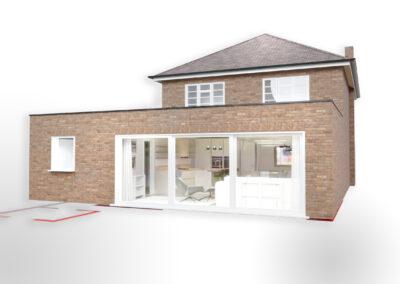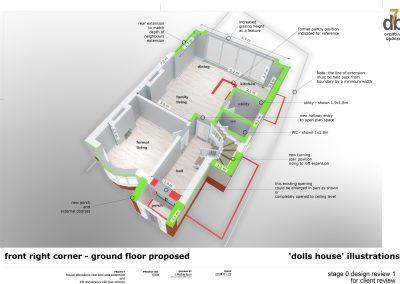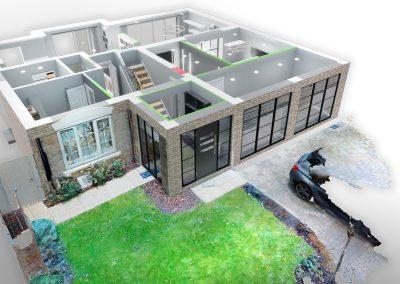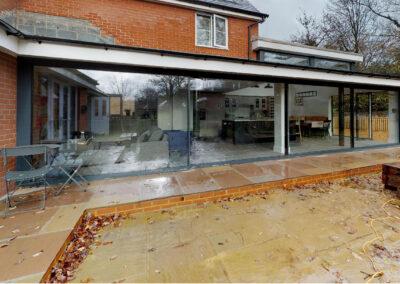Comprehensive Guide to House Extensions: Costs, Planning, and Regulations
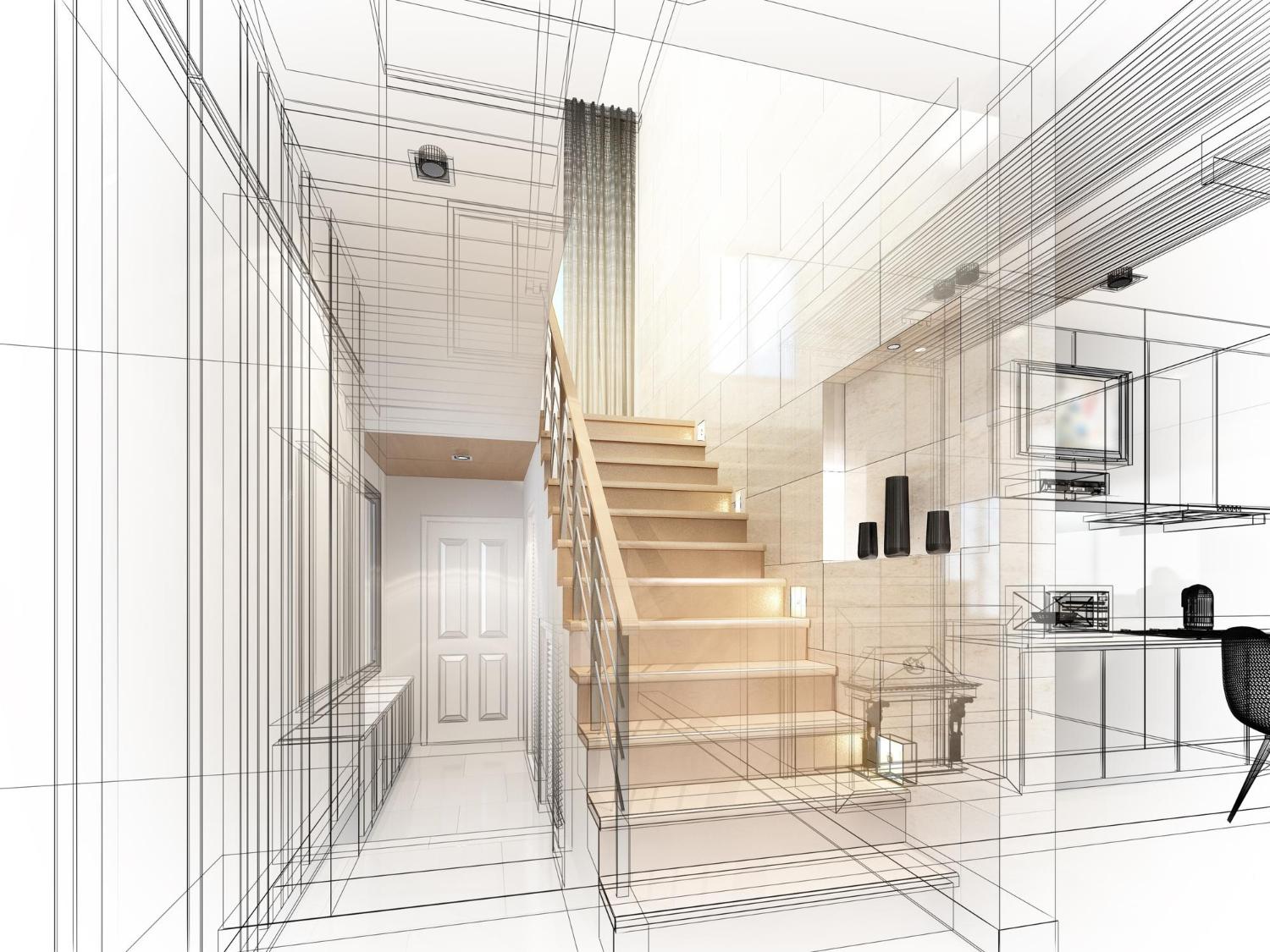
A house extension is a significant investment, one that you need to get right for you and your family to enjoy
Expanding your living space through a house extension is a significant investment that requires careful planning and understanding of various factors, including costs, financing options, planning permissions, and building regulations. In this guide, we provide an in-depth overview to assist you in navigating the complexities of extending your home.
Understanding the balance that can be achieved between cost, time and quality is key. A design proposal that meets your renovation wish list and also understands the priorities of your family living in the home for now and for the future.
Understanding House Extension Costs
aThe cost of a house extension varies based on factors such as size, design complexity, location, and the quality of materials used. Below is a breakdown of estimated costs per square meter:
Flat Pack Extensions:
Budget Option: Approximately £750 to £1,140 per square meter.
Midrange Option: Around £1,275 to £1,800 per square meter.
Luxury Option: About £1,650 to £3,600 per square meter.
Single Storey Extensions:
Budget Build: Between £1,250 to £1,800 per square meter.
Premium Contractors: Approximately £2,600 to £4,000 per square meter.
Rear Extensions:
London: For an average size of 45m², costs range from £85,500 to £135,000.
Rest of the UK: Costs range between £74,250 and £117,000.
Wraparound Extensions: Costs can vary significantly based on design and materials; detailed budgeting is essential. We often stay away from wraparound extensions unless your specific site constraints make the additional project costs worth it.
Floating a corner: Adding 10k or more to your project costs the complexity of floating a corner needs to be carefully appraised. Our dolls house process will give you unique insights as to whether such a structural solution is worth it for your project.
General advice would be to obtain detailed quotes from multiple contractors to ensure accurate budgeting for your specific project. However our approach is to encourage a front runner – a preferred bidder to be in place so that options and costs can be fully explored with the contractor as an active member of the design team.
Financing Your House Extension
Securing adequate financing is a critical component of your extension project.
Options include:
· Savings:
Utilising personal savings can avoid interest payments and debt.
· Home Improvement Loans:
Unsecured loans specifically designed for renovation projects.
· Remortgaging:
Releasing equity from your property to fund the extension.
· Government Grants:
In certain cases, grants may be available, particularly for energy-efficient improvements.
Consulting with a financial advisor can help determine the most suitable financing option based on your circumstances.
However you want to finince your build – and the most likely outcome is related to the equity value within your home. You really need a clear udnerstanding of your budget and how this is formed into a standard form of build contract. You need to know what’s in and what’s out of the main contract itself and what this leaves you with in terms of a balancing figure we call ‘client side expenditure’. It’s vital to know the real money leaving your account to fully realise your dream. We work with you to manage costs and give you the cost surety at each of our design stages.

Planning Permission and Permitted Development Rights
Understanding whether your extension requires planning permission or falls under permitted development rights is essential:
· Permitted Development Rights:
Some extensions do not require full planning permission if they meet specific criteria, such as size limitations and design constraints.
· Planning Permission:
Required for extensions that exceed permitted development limits or are in designated areas. The application process typically takes around 8 weeks, with fees varying by region (e.g., circa £103 in England).
It’s advisable to consult with your local planning authority or a planning consultant to ensure compliance with all regulations.
Building Regulations Compliance
All extensions must adhere to building regulations to ensure safety and structural integrity. Key considerations include:
· Structural Stability:
Ensuring the new structure is sound and capable of supporting loads. Also that proposed interventions are right for what you are trying to achieve. The design team members may have differing opinions on how best to progress – you really need strong leadership from your architect appointed as the lead consultant to guide you through decisions so that the best outcome is achieved and the original goals of your project are protected.
· Fire Safety:
Incorporating fire-resistant materials and adequate escape routes.
· Energy Efficiency:
Meeting standards for insulation and energy conservation.
· Ventilation and Damp Proofing:
Preventing moisture ingress and ensuring proper airflow.
Failure to comply can result in enforcement actions and potential removal of non-compliant work.
Our approach is methodical and ensures you have due consideration of the many choices you have to make leading up to achieving regulatory compliance.
Neighbour Considerations and Party Wall Agreements
When planning an extension, it’s important to consider the impact on neighboring properties:
· Party Wall Act 1996:
If the work affects a shared wall or boundary, you may need a party wall agreement. This involves notifying neighbors and obtaining their consent before commencing work. We would recommend that you appoint a party wall surveyor to record the existing condition of the properties involved. Then if there is a concern raised during the works you do not fall foul of this civil law and it’s timebound requirements.
· Right to Light:
Extensions should not significantly reduce natural light to neighboring properties.
Open communication and early discussions with neighbors can help mitigate disputes and facilitate a smoother construction process.
Design Inspiration and Types of Extensions
Selecting the right type of extension depends on your property’s layout, your needs, and budget. Common types include:
· Rear Extensions:
Extend from the back of the house, ideal for expanding kitchen or living areas.
· Side Return Extensions:
Utilise the narrow space at the side of a property, often seen in terraced houses.
· Wraparound Extensions:
Combine rear and side extensions for maximum space, creating an L-shaped expansion.
· Two-Storey Extensions:
Add space on both ground and first floors, suitable for adding bedrooms or bathrooms.
· Loft Conversions:
Transform existing attic space into functional rooms like bedrooms or offices.
· Over-Structure Extensions:
Build over existing structures, such as garages, to add additional rooms.
Each type has its own set of considerations regarding cost, design, and planning requirements.
Project Timeline and Process
A typical house extension project follows these stages:
1. Initial Consultation: Engage with architects or designers to discuss ideas and feasibility.
2. Design Development: Create detailed plans and obtain necessary approvals.
3. Planning Permission: Submit applications if required and await approval.
4. Building Regulations Approval: Ensure designs comply with all regulations.
5. Tender Process: Obtain and evaluate quotes from contractors.
6. Construction: Commence building work, adhering to agreed timelines and budgets.
7. Completion and Sign-Off: Final inspections and approvals before occupying the new space.
Clear communication and project management are vital to keep the project on track.
Cost-Saving Tips
To manage expenses without compromising quality:
· Obtain Multiple Quotes: Compare prices from various contractors to ensure competitive rates.
· Choose Standard Materials: Custom or imported materials can significantly increase costs.
· Limit Structural Changes: Avoid altering load-bearing walls or relocating utilities unless necessary.
· Project Management: Consider overseeing the project yourself if you have the experience, to save on management fees.
· Energy Efficiency: Incorporate energy-saving features to reduce long-term operational costs.
Speak to our Architect
Discover our unique dolls house process which let’s you test out options and visualise solutions.
Conclusion
Embarking on a house extension project requires meticulous planning and a thorough understanding of costs, regulations, and design options. By considering the factors outlined in this guide and consulting with our professional team, you can ensure a successful extension that enhances your living space and adds value to your property.



